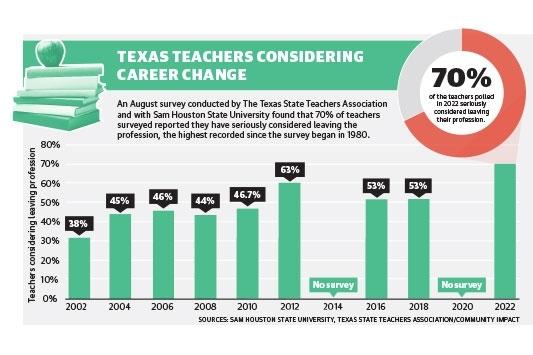Texas Schools Combat Teacher Shortages Through Global Recruitment Initiatives
Expanding Horizons: Texas Districts Embrace International Teacher Recruitment
Amid an ongoing deficit of certified educators, numerous Texas school districts are broadening their recruitment efforts internationally to bridge the staffing gap. With local recruitment campaigns yielding insufficient results, districts are forging connections with overseas education programs, particularly in nations such as the Philippines, India, and Nigeria, where English fluency and teaching qualifications closely match U.S. standards. This approach not only addresses the immediate need for qualified teachers but also enriches classrooms with diverse cultural insights, enhancing both the quantity and quality of the teaching workforce.
Driving factors behind this international recruitment surge include:
- Attractive compensation packages designed to lure global talent.
- Collaborative efforts with state agencies to expedite visa approvals.
- Customized professional development to align international educators with Texas curriculum and standards.
- Community support programs facilitating smooth integration for teachers and their families.
| School District | Number of International Teachers | Primary Source Countries | Teacher Retention Rate (%) |
|---|---|---|---|
| Houston ISD | 130 | Philippines, Nigeria | 87 |
| Austin ISD | 80 | India, Canada | 92 |
| Dallas ISD | 100 | Philippines, United Kingdom | 89 |
Obstacles Hindering Local Teacher Recruitment in Texas
Texas school districts, especially those in rural and suburban areas, face significant challenges in attracting and retaining qualified educators. Factors such as demographic changes, shrinking local applicant pools, and budgetary limitations on salaries contribute to this struggle. Urban districts often have an edge due to larger populations and more abundant resources. Additionally, the demand for teachers with expertise in STEM fields, bilingual education, and special education further narrows the pool of eligible candidates. High living costs and limited professional growth opportunities exacerbate retention difficulties.
Major recruitment challenges include:
- Lower pay scales compared to neighboring states and metropolitan areas.
- Geographical remoteness restricting access to diverse talent.
- Insufficient support systems for novice educators.
- Stringent certification requirements excluding experienced but uncertified local teachers.
| Challenge | Effect on Teacher Recruitment |
|---|---|
| Salary Competitiveness | Potential candidates opt for higher-paying districts |
| Certification Hurdles | Reduced number of qualified applicants |
| Geographic Isolation | Limited diversity in applicant pool |
| Retention Difficulties | Elevated turnover among early-career teachers |
Transforming Classrooms: The Impact of International Educators in Texas
The integration of international teachers is reshaping classroom experiences across Texas by introducing varied pedagogical methods and cultural viewpoints. These educators often bring innovative instructional strategies from their home countries, which can boost student participation and expand learning beyond conventional U.S. curricula. Their presence fosters an inclusive environment where students develop not only academic skills but also global awareness and intercultural communication abilities.
School leaders note that international hires help alleviate staffing shortages while contributing positively to school culture. Key observed benefits include:
- Enhanced Curriculum: Incorporation of global perspectives into lesson content.
- Language Exposure: Opportunities for students to engage with diverse accents and languages.
- Cultural Competence: Greater empathy and respect among students from different backgrounds.
| Area of Impact | Noted Changes |
|---|---|
| Student Participation | Approximately 15% increase in active engagement |
| Teacher Retention | Improved through enhanced mentorship programs |
| Parent-Teacher Relations | Introduction of cultural competency workshops |
Policy Frameworks and Support Systems for International Teacher Recruitment
To effectively mitigate teacher shortages, Texas districts are adopting comprehensive policies that facilitate the hiring and integration of international educators. Efforts focus on revising certification protocols to better recognize foreign credentials and streamlining visa processes. Collaborations with global recruitment agencies help maintain a consistent influx of qualified teachers while ensuring rigorous vetting to uphold educational standards.
Equally important are support mechanisms designed to retain international hires. Orientation sessions address cultural adaptation, classroom management, and Texas-specific curriculum requirements. Ongoing mentorship and professional development opportunities empower these educators to thrive within the U.S. education system. The following table outlines key support initiatives prioritized by Texas districts:
| Support Program | Objective | Anticipated Benefit |
|---|---|---|
| Cultural Adaptation Workshops | Facilitate smooth cultural transitions | Improved teacher retention |
| Credentialing Support | Simplify licensing and certification | Accelerated onboarding process |
| Peer Mentorship Programs | Provide continuous professional support | Enhanced job satisfaction and performance |
Conclusion: Balancing Immediate Needs with Long-Term Solutions
As Texas schools continue to face a shortage of qualified teachers, international recruitment emerges as a practical and innovative response to fill critical vacancies. While this strategy offers immediate relief, sustainable solutions require addressing underlying issues such as competitive compensation, improved working conditions, and robust retention programs. Policymakers and educational leaders must collaborate to develop balanced approaches that ensure both short-term staffing stability and the long-term quality of education for Texas students.




